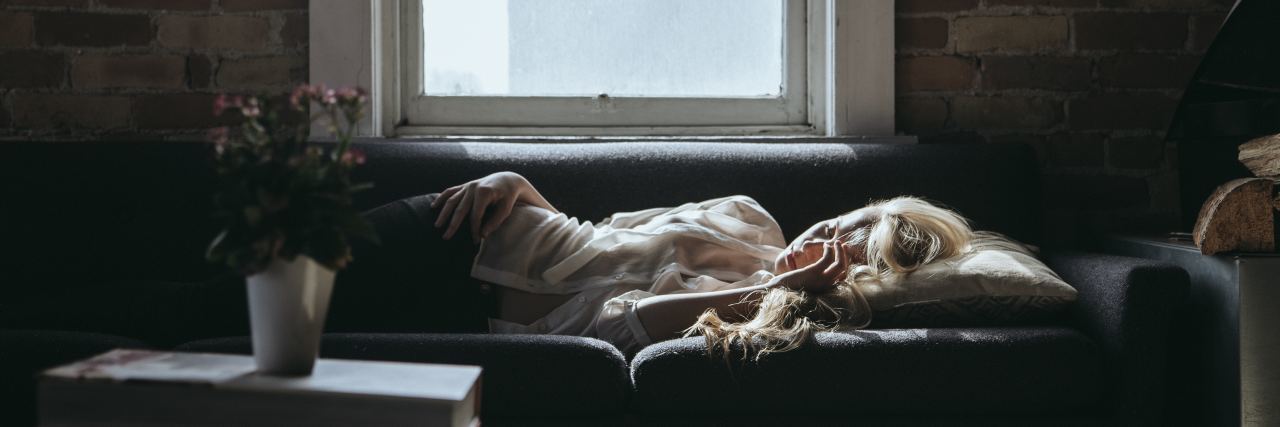Fibromyalgia can be a scary condition to have, and the pain is unpredictable. While I pretty much have pain all the time, I’ve been able to get to a place where it’s mild to nonexistent. The episodes where I’m bed-ridden come less frequently because of this routine of morning nature walks, afternoon strength and cardio training, and evening swimming and yoga exercises. The styrofoam roller, which I rely on daily, eases the stress in my muscles.
- What is Fibromyalgia?
- What Are Common Fibromyalgia Symptoms?
I can work or sew for hours, schedule appointments, enjoy conversations with friends and customers and forget about the pain. Hundreds of customers have walked in and out of my studio with no idea that I have fibromyalgia. I am good at both managing it and hiding it when I need to get by. But the most terrifying thing about living with fibromyalgia is how the pain starts.
If you can imagine sinking in quicksand, it’s a similar fear. The pain starts at my feet, and it becomes difficult to walk. My ankles feel weak, and then they stiffen up. Then, the stiffness reaches my knees, thighs, hips and up my arms. I’ll notice significant weaknesses in my wrists and feel the need to rotate them. How the pain comes on is as though it’s creeping up until it has reached my neck and head.
The muscles swell in my neck, and they feel like their half the size of tennis balls. It’s the kind of pain that is hard to describe. Words like “tension,” “shooting” and “stabbing” don’t quite explain the discomfort.
The tension turns into stiffness which becomes a pain so immense, I need to go to bed or lie down. They say movement and exercise are the best, and yes, I agree. There are times when I need to work harder, change focus and change up my workout regimen.
I’ll be sewing in my studio and have this quicksand anxiety. With deadlines to meet and people to keep happy, I couldn’t allow this anxiety to overthrow me. Sometimes the pain causes anxiety or anxiety causes the pain. Finding balance in my routine has helped tremendously.
At first, brain fog was the worst for me. A doctor told me not to drive at night. Consequently, this has hindered my ability to go out with friends freely. It’s the toughest in the wintertime when the sun descends before 5:00 in the afternoon. I’ve had to honor these limitations despite the struggle and alienation I had felt.
If there is one thing I’ve learned in my journey to recovery, it’s this: lifestyle choices have consequences, causes and effects. How you function in your day-to-day will either set you back, hurt or help. I realize that no matter how perfectly I manage, the pain will always be there. I’ve been able to ignore it, working until I forget about it. Some days it’s hardly noticeable. I’ve at least got strategies that prevent me from collapsing in bed or on the couch so soon.
I am not someone who can tolerate doing nothing or lying around. I am someone who needs to and likes to be busy. I do my best not to allow chronic pain to dictate my day.
Photo by Benjamin Combs on Unsplash

